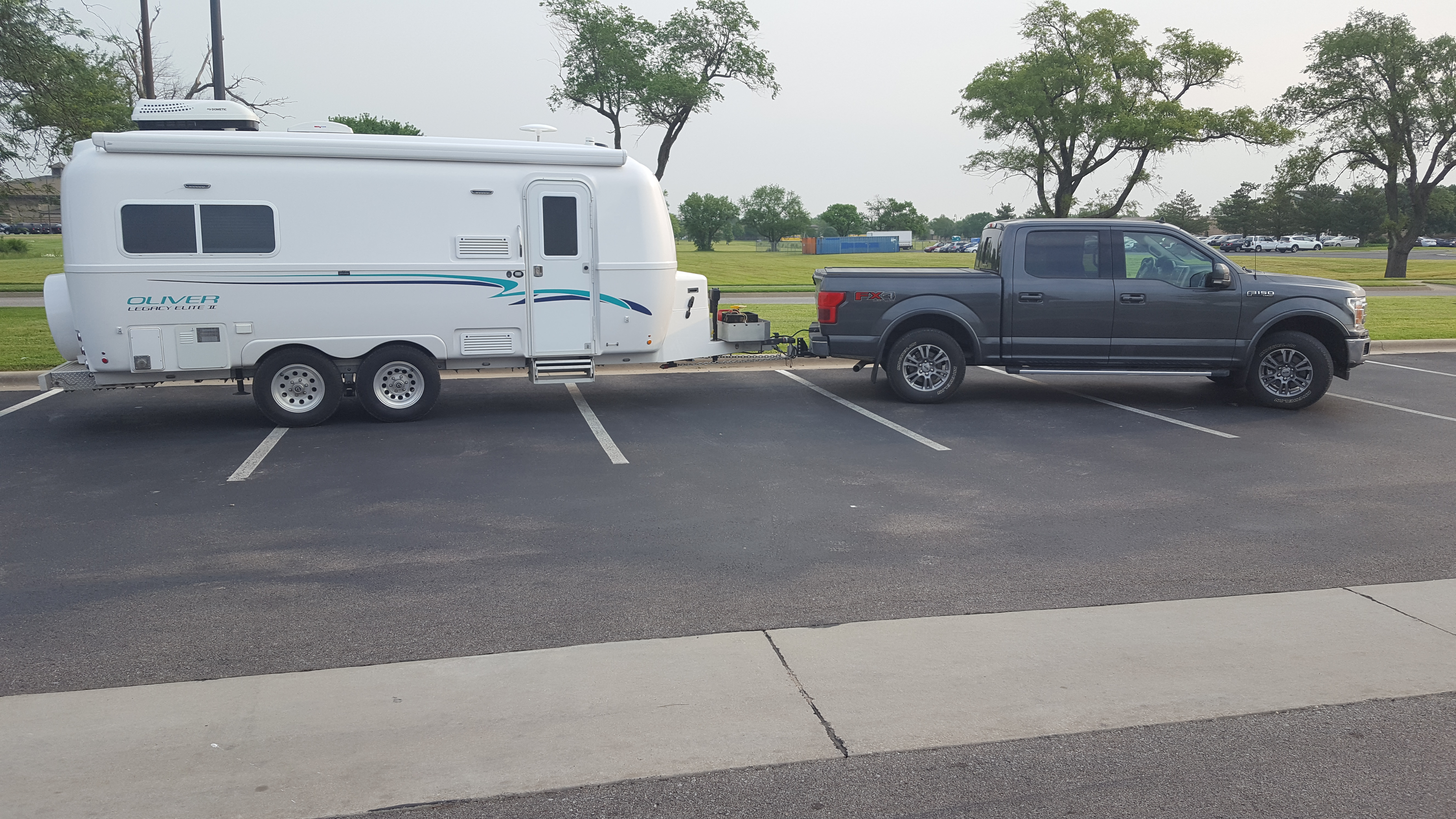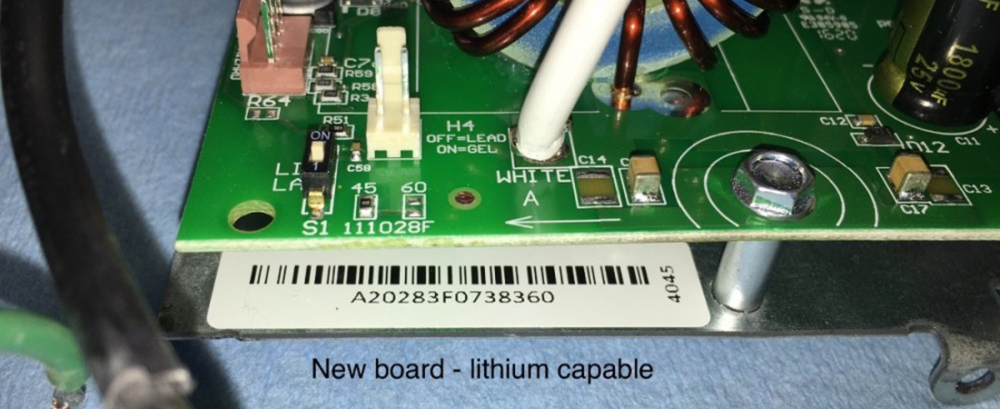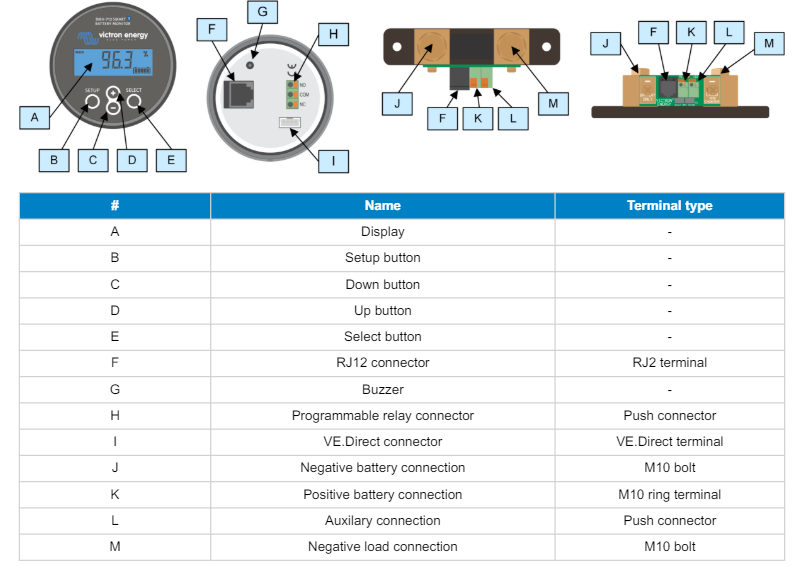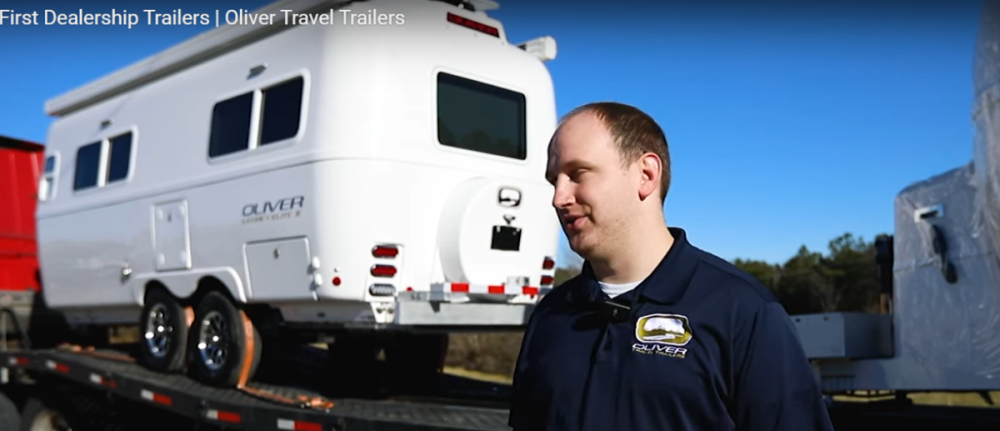-
Posts
2,053 -
Joined
-
Last visited
-
Days Won
53
Everything posted by Geronimo John
-

Starlink dish mount on Dometic awning brackets
Geronimo John replied to RoadKingsofGA's topic in Ollie Modifications
Personally I prefer Art's (MaxBurner) security plan: + + + + + + + + ARFF WOFFFF Chomp. Problem gone. 🙂 GJ -

Truma Varioheat furnance not working with error code
Geronimo John replied to Mike and Jill's topic in General Discussion
If you have children or curious pets, an oil filled space heater is much safer to wandering hands or tongues. But they do weigh a bunch more than the typical 2 pound space heaters sole at Walmart. GJ -
More than a few of us, myself included, have found that our trailers look just fine with the eight FOUR center hub caps and their supporting "Cones ???" removed. This is especially true of owners that routinely shoot their hubs with an IR temperature sensor. With the cones and caps installed, it is difficult to get a good bearing/hub temperature readings. This is the topic of several members here on the forum. GJ
-
Progressive Dynamics PD4045 LiCSV Upgrade.docxProgressive Dynamics PD4045 LiCSV Upgrade.docx Some of the 2018 OE2's PD Converters have a LI switch that allows use with Litho's. Below is a picture of the LI/LA switch and a hard copy of John Davies procedure to upgrade the PD if you don't have the switch as well.
-
You are correct. However fiberglass has the advantage of being cast in many ways. From many perspectives we would want the top mold to be very aero efficient. But the bottom could be squared off some with much less impact from an aero perspective. This is exactly what most vehicle shapes at the rear are. Squarish low for trunk space and aero above for efficiency. The auto mfg's figured out how to do this with sheet metal, and the boat mfg's are doing it in fiberglass. That said, I'm not suggesting Ollie bottom be a cube. Just moderate it a bit to square up a tad the sleeping corners. Just a that. GJ
-
No, it works great, just not to the TV. Weak signal as we all know. My Ollie not in Hawaii, so I am at a disadvantage of not being able to run out and take a peek. But I do not recall seeing a 4-wire flat style connection on our Victron Orion 12/12 DC to DC unit. Hence, it appears the only way will be to connect the to the 712 Smart Display. I have as well, but from downloaded pictures from the web, our 712 Shunt does not have a connection for a 4 wire flat style Dongle plug. It has a RG45, and a NO, a NC, and a Common port. Hence the only option I can research find is to the 712 display. JPR
-
From the Victron 712 Smart manual, below are the connections. I assume that the VE.Direct (Terminal I) is where I could plug in the dongle which appears to also have a 4 wire flat "VE Direct" connector. Being higher in the trailer than below the dinette seat (Where my Victron Orion 12/12-30 resides, it would seem that the 712 monitor would be a more optimal location.... "Higher is better than closer" info from JD1923. Sadly the 712 monitor is installed in the fiberglass and rotation is not an option.
-
Thank you for "The Rest of the Story"! It is a great team at OTT, one I call "World Class". Keep up the great work, Geronimo John
-
The tanks are only ones that were used in the propane exchange program. If our tanks in our trailers have not been exchanged, this is a non issue. Below if from the CPC. GJ +++++++++++++++++++++++++++++++++++++++++++++++++++++++++++++++++++++ Recall Details Description: This recall involves EVAS 20 lb. propane exchange cylinders with model number EVAS – M0859, a serial number beginning with a “W,” and a date code of either “06-23” or “07-23.” The model number, serial number, and date code are stamped on the collar of the cylinder. While the cylinders were initially sold with an AmeriGas label, consumers could have exchanged these cylinders with other propane distributors who would have then placed their own branded sleeve/label on them. Remedy: Consumers should stop using the recalled EVAS 20 lb. propane cylinders immediately, close the top valve completely and return them to any AmeriGas Propane Exchange retail location for a free replacement. Consumers can find exchange retail locations at https://www.amerigas.com/locations/find-propane. Worthington advises consumers to close the valve on top of the cylinder completely when returning them.
-
AMEN!!!!!! Got my vote for a mold mod. Hopefully it does not cost over a million dollars! 🙂
-
The picture was snipped from the Oliver Operations Mgr stating they had just finished loading out the first shipment to a dealership. This one: From his and your statements, and this video, it is apparent that the trailers likely were wrapped while on the truck bed. That has good and bad considerations. The good is a pretty picture of our beautiful OTT machine. One of the bads is pondering how much of a PITA it must have been to wrap these trailers with them on the truck bed hopefully using ladders and fall safety equipment. Maybe a smarter "consideration" would be to have the video show a shot of the the beautifully prepared OE2 being wrapped under cover at the factory. That's how the vast majority of shrink wrapping is done in the industry... not being done outside in an elevated position obviously working from ladders.... Or maybe ship them with a nice tight fitting cover instead of shrink wrap. Even better would be having the cover printed with huge letters "Oliver Travel Trailers. 🙂 GJ
-

Simple AGM to Lithium Conversion question(s)
Geronimo John replied to Danno and Donna's topic in Mechanical & Technical Tips
I would love to see pic's of that. One low and one high would facilitate natural convection. GJ -
Using the "Any Victron device that has the word "Smart" in it's name has Bluetooth connectivity" may open up another option. Can we combine my having the Victron 712 Smart Shunt in the battery box and your "Higher is better than closer" concepts? What if I connect the dongle to the shunt and run its five feet of cable up to the upper cabinets of the street side. Then extend the dongle forward until I run out of cable. At that location, stick the dongle to the ceiling of the cabinet. Much higher than under the dinette location, and not much further back. Your thoughts? GJ
-
Correct on location. I can pick it up just outside Ollie, but at 10' I lose the Victron Connect signal. Hence the need for an extender. From today's reading, I have learned that any Victron device that has the word "Smart" in it's name has Bluetooth connectivity. This would seem to imply that it should not be necessary to upgrade to the Cerbo or other computer based systems unless there are other features you want to have. Is this thinking logical? GJ
-
With the tremendous effort that OTT expends in their make ready process, I'm surprised that they don't "Shrink Wrap" their trailers for transport. GJ
-

Tire pressure confusion - Legacy Elite 2 POLL
Geronimo John replied to John E Davies's topic in Towing an Oliver
Two Flat Tires On Your OE2 Steve as time permits, would you please consider splitting this topic off separately. I sort of highjacked JD's Tire Pressure Confusion thread with this topic. As a safety topic, it warrants all of us to consider the possibility as has been mentioned. Thanks, GJ. +++++++++++++++++++++++++++++++++++ I have consolidated the great inputs for the topic, and added several more as I ran the scenario several times in my brain. The attachment reflects what I, and many of you, believe to be a reasonable order of tasks to accomplish. It is not perfect, but certainly can be adjusted to fit your situation. I hope that it is never needed in your case, but I know it has already happened to more than a few. WORD OF CAUTION: Two Flat Tires On An OE2.docxItem 6 is hypothetical from my pea-brain. I have not tried it, but I do think that it will work as intended. Key question is how the EZ-Flex will impact the dunnage, specifically will it be needed on both axles? Hopefully one of our owners could mock it up while doing their bearing service. Maybe add pictures of their solution to this thread. I will not see my trailer until July, and certainly will do so then. But sooner than then would be a great service to our Community. Travel safely and enjoy life every day! GJ -

Simple AGM to Lithium Conversion question(s)
Geronimo John replied to Danno and Donna's topic in Mechanical & Technical Tips
Time WELL spent! With twin 300's, you can easily power up a medium size gathering! Glad for your 100% success. GJ -

Tire pressure confusion - Legacy Elite 2 POLL
Geronimo John replied to John E Davies's topic in Towing an Oliver
When I get to Talihina OK, I have 8 miles of 10%+ grade fire road to haul Ollie up Buffalo Mountain. The road is graded (sometimes) and I am dodging rocks and holes along much of it. But there are times that I must also use every tool I have (4WD, Low Range, Low Gear, Locker Rear axle, and deair my tires as well. Since at the bottom I have no idea what I'll be encountering going up, my airing up and down when in doubt is just a smart precaution. But like you, I probably have loaned the compressor to others far more times than I have used it. GJ -

Tire pressure confusion - Legacy Elite 2 POLL
Geronimo John replied to John E Davies's topic in Towing an Oliver
Steve another good one. Thanks. To stir the discussion pot a bit, should we put the single tire on the port (Street) or starboard (Curb) side and why? I have looked on line for any statistical data as to which side gets more flats, but have found no reliable info. My gut says put the single (best tire) on the port (Street) side. Why? There are more curbs, pot holes and other debris migrating "down slope" that direction and that may induce higher odds of another flat. But that's just my humble guess. Who has the facts on this? GJ -

Tire pressure confusion - Legacy Elite 2 POLL
Geronimo John replied to John E Davies's topic in Towing an Oliver
When I get to Talihina OK, I have 8 miles of steep fire road to haul up Ollie. The road is graded (sometimes) and I am dodging rocks and bigger holes along the way. So airing up and down is a routine that I do twice a summer each way. But you are right, I have allowed others to use it far more often each year than the Buffalo Mountain Road drill I use it on. But the real benefit is having it in the truck when going off road. Again, mostly for others use...... GJ -

Simple AGM to Lithium Conversion question(s)
Geronimo John replied to Danno and Donna's topic in Mechanical & Technical Tips
Danno and Donna: Can the two Epoch batteries be mounted on their sides and still fit into the existing tray as a result? If so, I would orient it to have the air vent high vs. low. GJ -

Tire pressure confusion - Legacy Elite 2 POLL
Geronimo John replied to John E Davies's topic in Towing an Oliver
Good reminder for a shameless plug for my third most favorite tool. This with a 5 AH battery and the case live in our Ollie wardrobe closet. I pull it out when going rogue off-road with the TV.... just in case it is needed way out back. Highly recommend this air compressor for mobile use: GJ -

Tire pressure confusion - Legacy Elite 2 POLL
Geronimo John replied to John E Davies's topic in Towing an Oliver
Brilliant !!!!!!!!!!!!!!!! -

Simple AGM to Lithium Conversion question(s)
Geronimo John replied to Danno and Donna's topic in Mechanical & Technical Tips
Ron: I caringly rewrote my above thoughts at least a dozen time specifically to be kind and respectful. It was also made in the hopes to highlight that the apparent intent to install larger litho's without the supporting and securing battery box tray should not be executed. The idea of having litho's directly sitting in the battery bay may work for a given owner's use. But certainly would likely become a serious safety hazard should their use change. I learned just how rough the Yukon Territory and some Alaska "corduroy roads" are two summer ago. For strictly highway use, unsupported and unrestrained litho's may work just fine. But what happens when that trailer gets sold, and the new owner is unaware of such an install's vulnerabilities? As a Registered Mechanical Engineer I am ethically required to not be silent when I can foresee a significant life and fire safety hazard. Having that much weight not fully restrained and/or supported in a battery box of a mobile application would be a problem. Especially for a mobile application that will be subject to high amplitude multiple directional accelerations. That said, your suggestion for a load spreading and battery restraining "platform" certainly is a suggestion in the right direction. I think it is a great suggestion. But from the perspective of respect and understanding, was it appropriate for you to suggest it? From "The knife cuts both ways" perspective; the answer is no. But from the higher perspective of Oliver Safety and caring for our family members: I think we can agree that both our intents were spot on. GJ










